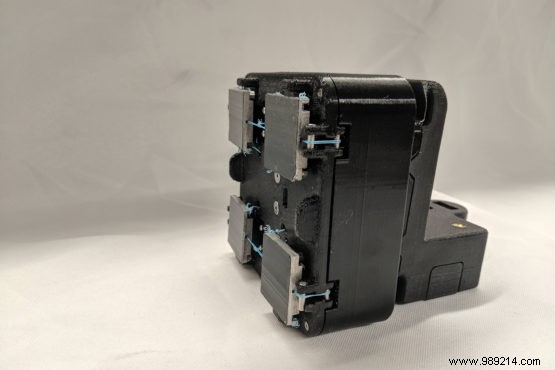Recently, US researchers presented a robotic gripper whose end goal is to collect space debris that experts are concerned about. However, this clamp is equipped with an adhesive which is not sticky.
As we recalled in December 2020, the ESA estimates that there are more than 34,000 man-made space debris greater than 10 cm around the Earth. They spin through space at several thousand kilometers per hour and pose a threat to satellites, as well as the International Space Station (ISS). This observation, which is not new, has been driving for several years the creation of various concepts to clean up the Earth's orbit. The latest solution is a robot gripper capable of clinging to objects developed by a team of researchers from Stanford University (United States).
According to a press release from May 20, 2021, the device is inspired by the gecko , an amazing lizard capable of suspending the weight of its body on just one of its fingers! According to the researchers, the robotic gripper is not sticky. On the other hand, it adheres strongly to objects, obviously thanks to a shot in the right direction.
“The texture is too fine to see, but if you look at it under a microscope, you'll see a forest of tiny, sharp little corners. Like the gecko itself most of the time, it is not sticky. But when you pull in the right direction, it hooks and it hooks really hard. So that gives us a controllable adhesive" said Mark Cutkosky, one of the project's researchers.

According to scientists, the device has already shown its resistance to radiation and the extreme temperatures found in space. Astronauts had already attached it to the walls of the ISS. More recently, the clamp equipped Honey, one of the station's Astrobees, for tests in a microgravity environment (see video at the end of the article). Remember in passing that the Astrobee are intended to become assistants to astronauts. Nevertheless, they are currently used as an experimental platform.
The Stanford researchers' clamp, for example, made it possible to hang an Astrobee on a wall. However, the first real use that astronauts should make of it is for tool recovery aboard the ISS. This will make it possible to automate as many of the activities taking place in space as possible. Later, the Astrobees will use the "Gecko Claw" to collect space junk such as antennas and other solar panels.
Here are images of the tests of the robotic gripper on board the ISS: